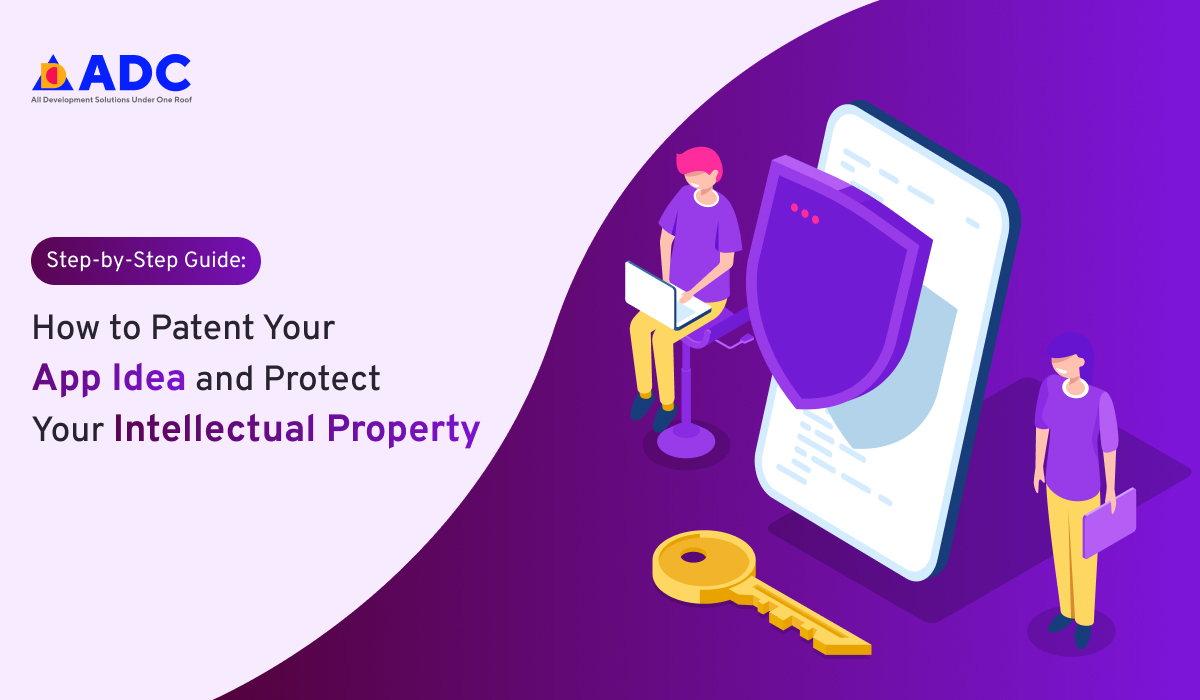Recent post
Subscribe to the Blog
Get our research-based blogs and stories delivered to your inbox.

In today’s digital age, app development has become a popular way to bring innovative ideas to life. However, with so many people creating new apps, protecting your app idea has become more important than ever. One of the best ways to protect your idea is by obtaining a patent. In this article, we will discuss how to patent an app idea and provide a brief overview of the patent process.
When you develop a new app idea, you invest a lot of time, effort, and resources into creating it. If someone else were to steal your idea and develop a similar app, it could be devastating for your business. Obtaining a patent provides legal protection and ensures that no one else can create, use, or sell your idea without your permission. A patent also adds value to your business and can be used to attract investors or potential buyers.
One of the most important steps in the patent process is conducting a thorough patent search. Before you file a patent application, it’s essential to ensure that your idea is unique and hasn’t already been patented by someone else. In this section, we will discuss the importance of conducting a patent search, the steps to conducting a search, and the resources for conducting a patent search.
Conducting a patent search is crucial because it can help you avoid wasting time and money on an idea that isn’t patentable. It’s also important to avoid infringing on someone else’s existing patent. A patent search can help you identify any similar ideas or patents that may exist, giving you a better understanding of the patent landscape for your idea.
There are several resources available to help you conduct a patent search, including:
After conducting a patent search and determining that your idea is patentable, the next step is to draft a strong patent application. In this section, we will provide an overview of the elements of a patent application and offer tips for drafting a strong application.
A patent application consists of several elements, including:
Hire a patent attorney: A patent attorney can help you navigate the patent process and ensure that your application is comprehensive and well-written.
Be specific and detailed: The more specific and detailed your patent application is, the stronger it will be. Include drawings, diagrams, and examples to help illustrate your invention.
Use clear language: Use clear, concise language and avoid using technical jargon that could confuse the reader.
Focus on the claims: The claims section is the heart of your patent application. Make sure that your claims are well-written, detailed, and accurately reflect your invention.
Emphasize the novelty and usefulness of your invention: Highlight the unique aspects of your invention and explain how it solves existing problems or improves upon existing technology.
Filing a Patent Application:
Once you have drafted a strong patent application, the next step is to file it with the appropriate patent office. In this section, we will provide an overview of the patent application filing process and discuss the fees and timelines associated with filing a patent application.
The patent application filing process generally involves the following steps:
Determine the appropriate patent office: Depending on where you are located and where you want to obtain protection for your app idea, you will need to file your patent application with the appropriate patent office.
Submit the application: You will need to submit your patent application, along with any required fees, to the appropriate patent office. The application will then be assigned to a patent examiner.
Examination: The patent examiner will review your application to determine if it meets the requirements for patentability.
Issuance: If the application is approved, the patent will be issued.
Filing a patent application can be expensive and time-consuming. The fees associated with filing a patent application can vary depending on the patent office and the complexity of the application. In the United States, for example, the filing fee for a basic utility patent application can be several thousand dollars.
The timeline for obtaining a patent can also vary depending on the patent office and the complexity of the application. In the United States, for example, it can take several years for a patent to be issued.
After your patent application is filed, it will be assigned to a patent examiner for review. In this section, we will provide an overview of the patent examination process and offer strategies for responding to office actions from the patent examiner.
Initial examination: The patent examiner will review your application to ensure that it meets the basic requirements for patentability, such as novelty and non-obviousness.
Office action: If the patent examiner finds issues with your application, they will issue an office action. The office action will identify the issues and provide a deadline for responding.
Response: You will have the opportunity to respond to the office action and address the issues raised by the patent examiner. Your response should include a detailed explanation of why your invention meets the requirements for patentability.
Further examination: The patent examiner will review your response and may issue another office action if they have further concerns or questions.
Patent grant or rejection: If the patent examiner is satisfied with your response, your patent will be granted. If not, your patent may be rejected.
Hire a patent attorney: A patent attorney can help you navigate the patent examination process and ensure that your response is comprehensive and well-written.
Address all issues raised by the patent examiner: Your response should address all issues raised by the patent examiner, even if you disagree with their assessment.
Provide evidence and arguments: Your response should include evidence and arguments to support your position and convince the patent examiner that your invention meets the requirements for patentability.
Follow deadlines: It is important to respond to office actions within the deadlines provided by the patent examiner to avoid abandonment of your patent application.
Consider amending your claims: If the patent examiner finds issues with your claims, consider amending them to address the concerns and increase the chances of your patent being granted.
Once your patent has been granted, it is important to enforce your patent rights to prevent others from infringing on your invention. In this section, we will explain how patents can be enforced against infringers and discuss the benefits of enforcing patent rights.
Cease and desist letters: You can send a cease and desist letter to the infringer, demanding that they stop infringing on your patent.
Lawsuits: If the infringer refuses to stop infringing on your patent, you can file a lawsuit to enforce your patent rights.
Licensing: You can also license your patent to others, allowing them to use your invention in exchange for a royalty or other compensation.
Let’s Get A Free Consultation from Our Experts.
Protect your investment: Enforcing your patent rights can help protect the investment you made in developing your app idea.
Maintain market position: Enforcing your patent rights can help you maintain your market position and prevent competitors from stealing your market share.
Generate revenue: Licensing your patent to others can generate revenue and provide a new source of income for your business.
If you have an app idea but lack the technical expertise to develop it yourself, consider working with an app development company. App development companies specialize in developing and launching mobile apps and can help you turn your idea into a reality. When selecting an app development company, consider their experience, reputation, and expertise in your industry. Working with an app development company can help you save time and money and increase the chances of your app being successful in the market.
Seek out the expertise of an app development company, like MoonTechnolabs, to bring your app idea to life.
MoonTechnolabs can assist with patent drafting, as well as app development.
The cost to patent an app idea can vary widely depending on several factors, such as the complexity of the invention, the type of patent application, the jurisdiction in which the application is filed, and the attorney fees. In general, the cost to patent an app idea can range from a few thousand dollars to tens of thousands of dollars.
For example, the cost to file a provisional patent application can be relatively low, ranging from $1000 to $3,000, while the cost to file a non-provisional patent application can be much higher, ranging from $10,000 to $20,000 or more. Additionally, there are maintenance fees that must be paid to keep the patent in force, which can range from a few hundred to a few thousand dollars per year.
In today’s digital age, protecting your app idea has become more important than ever, and obtaining a patent is one of the best ways to do so. Before filing a patent application, conducting a thorough patent search is crucial to avoid wasting time and money on an idea that isn’t patentable. The patent application process includes preparing and filing an application, waiting for the patent office to review it, responding to objections, and ultimately receiving your patent. The patent application consists of several elements, including the title, abstract, background, description, and claims sections. Hiring a patent attorney can be helpful in drafting a strong patent application.
Consider signing a non-disclosure agreement (NDA) with anyone you share your idea with.
Keep your idea confidential and only share it with trusted individuals.
Consider obtaining a provisional patent.
Yes, you can patent an app concept if it meets the requirements for patentability.
Yes, someone can steal your app idea if you do not take measures to protect it.
Yes, you can sell an idea for an app, but it is important to protect your idea before sharing it with potential buyers.
Get our research-based blogs and stories delivered to your inbox.
 Top Mobile App Development Firms
Top Mobile App Development Firms
 Top Web Development Firms
Top Web Development Firms
 Top On Demand App Developers Firms
Top On Demand App Developers Firms